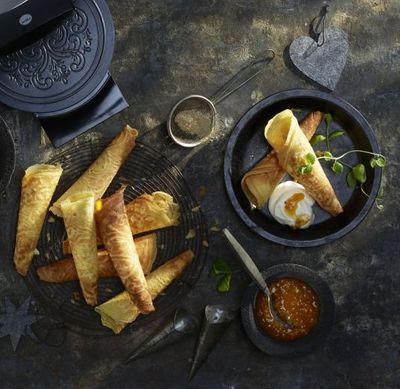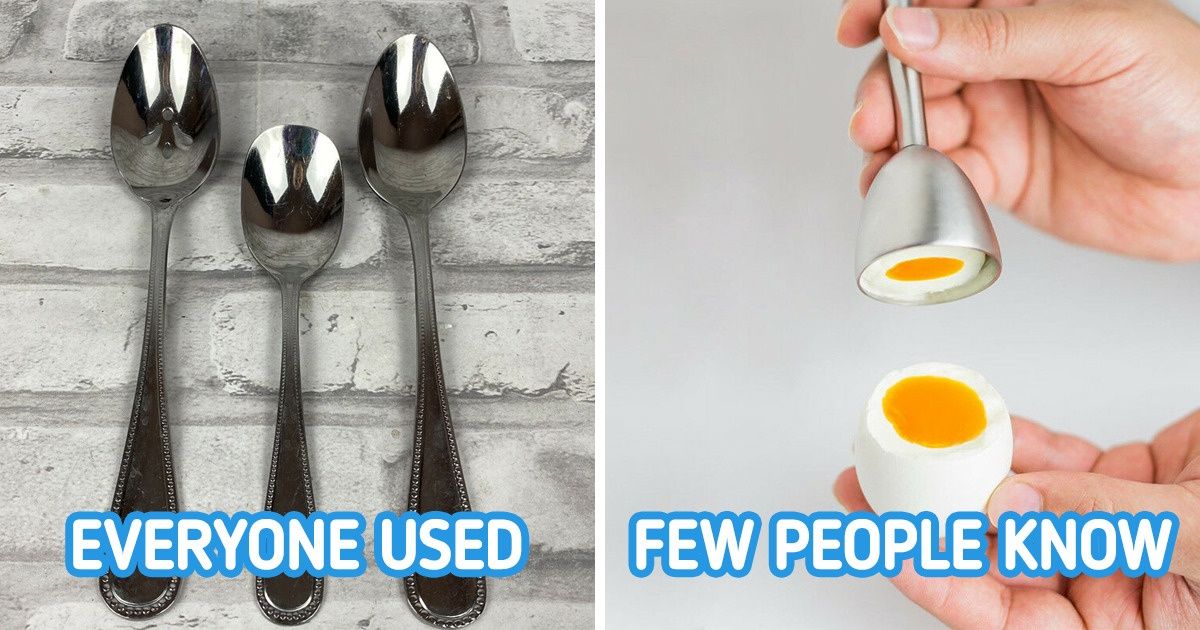You forgot the "krumkakejern" (coiledcake-iron) from Norway ;)


It’s no secret that in order to cook many dishes, apart from special recipes, people use specific utensils and appliances. Chinese dumplings, for example, have to be cooked in a bamboo steam cooker. In Denmark, they bake doughnuts that require a special metal form. That’s why sometimes just one glance can help you understand which country possesses certain cuisines.
Today, Bright Side is talking about utensils that can be found in kitchen cabinets all over the world.
Traditional clay North African pottery is an integral part of Moroccan cuisine. Thanks to its special shape, steam gets accumulated in the upper part of the lid first before the condensation smoothly flows down. This process is repeated until the dish is completely cooked.
Soft-boiled eggs are an inevitable part of a German breakfast. But oftentimes, eggs can’t be peeled easily and we end up getting eggshells all over the place. That’s why inventive German people use this device. It helps to neatly remove the “head” of the shell from an egg. Toppers can be of different shapes, but their function stays the same. It’s a perfect alternative to a spoon.
In 1933, the Bialetti company was first to release a geyser coffee maker (Moka pot), which became the symbol of Italian coffee later on. Since that moment, such pots became a favorite kitchen gadget in many Italian kitchens.
Æbleskivers are round Danish doughnuts. Traditionally, they were cooked with apples or apple jam. That’s where the name, which literally means “apple slices” derives from. Today, such doughnuts are mainly made without any stuffing and are quite plain — that’s why they are normally served with jam or powdered sugar. Some people use them in main courses, which often includes a gravy to dip the fresh doughnuts into.
The tradition of making pelmeni (dumplings) at home with the entire family is alive and well in many Russian families. In order to speed the process up, many people use a special device. It helps make dumplings faster and in a special shape.
Chawan is a traditional bowl for making and drinking tea. There is a big classification of chawans, depending on their shape and the material they’re made from. The best thing about a chawan is that it feels comfortable in one’s hands and keeps the temperature of a drink for a long time.
Many Chinese families use bamboo steamers every day together with a frying pan. It is environmentally friendly, doesn’t burn food, and the food can be served right in it, leaving you with fewer dishes to wash. Isn’t that great?
Armudu has several advantages over regular cups. Due to its pear-like shape, it doesn’t burn the hands because the upper part of the glass doesn’t heat up much. Also, the lower part doesn’t cool down fast and keeps the tea hot for the entire drinking experience. These glasses are used in Azerbaijan and Turkey.
Raclette is the name of both the national dish and the included cheese, which is the main ingredient in it. The cheese should be melted and eaten together with vegetables or meat. Raclette is often cooked at ski resorts where they put cheese heads near grilles. In order to cook this dish at home, Swiss people use special raclette makers for homes.
Paella is a national Spanish dish made from rice and seafood. The pan on which this dish is cooked is called a “paellera.” It’s not deep but has a large diameter, which means it can fit a lot of paella, allowing you to make enough for the entire family.
Italians are big fans of pasta. In order to cook it in home conditions, they use special pasta machines. Sometimes they’re even inherited. A Reddit user named Nyarfy, for example, got his machine from his father who was a chef.
Thali is a big tray where rice is placed in the center and many other small bowls with different gravies, snacks, and dishes are placed around it. The dish itself is also called “thali.”
There’s hardly any kitchen in Argentina, Chile, or any other South American country that doesn’t have a calabash — a special bowl for making mate tea. Mate is a tonic drink that is incredibly popular in this region. It’s brewed in calabash, which goes together with a tube called a bombilla. The side of the tube that is immersed into the bowl has a sieve filter. If not for the bombilla, it would be extremely uncomfortable to drink mate because the tea leaves are very small and would get into the drinker’s mouth.
Studying different cultures with the help of kitchen utensils turns out to be as interesting as tasting the traditional dishes themselves. Have you ever seen or used any of these items?
You forgot the "krumkakejern" (coiledcake-iron) from Norway ;)

that "Chawan" should be called "Matcha抹茶(green tea)" in Japan, and bamboo steamers must wash before using,l'm Chinese,we usually use that for making "Dim Sum"!😋
Raclette is more German. Switzerland is fondue.
that pan for round donuts also looks like something for takoyaki 🥰
recently bought such a bamboo steamer, and made some chinese dumplings in it, so delicious











